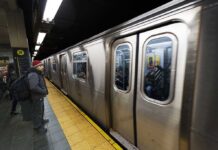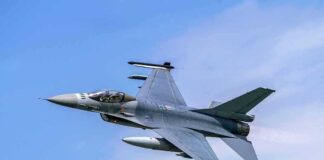
Newark Liberty International Airport operated with just 3 controllers instead of 14 during a critical staffing shortage, resulting in flight delays up to seven hours and raising serious questions about air traffic safety across the nation.
Quick Takes
- Newark Airport faced a severe shortage with only three air traffic controllers on duty instead of the required 14 during peak hours.
- The FAA implemented traffic management initiatives to ensure safety despite understaffing.
- Transportation Secretary Sean Duffy announced plans to reduce flights at Newark for several weeks.
- Three recent communications blackouts affected the control tower’s ability to track or communicate with planes.
- Duffy proposed raising the mandatory retirement age for controllers from 56 to 61 to address a nationwide shortage of 3,000 controllers.
Critical Understaffing Exposes System Vulnerabilities
Newark Liberty International Airport experienced a severe staffing shortage, with Federal Aviation Administration reports revealing that only three air traffic controllers per hour were managing the airspace during peak times instead of the required 14. This dangerous understaffing led to flight delays extending up to seven hours as the limited personnel struggled to manage departures and arrivals safely. While the FAA and the air traffic controllers union have an agreement for specific staffing levels, neither organization has responded to inquiries about the details of this arrangement, raising questions about accountability and oversight in this critical safety system.
FAA spokesperson Rick Breitenfeldt confirmed the minimal staffing levels but insisted safety protocols remained intact, stating, “We plan for staffing with traffic management initiatives to ensure safety is never compromised.” This explanation has done little to alleviate concerns from travelers and aviation experts about the potential risks posed by such extreme understaffing at one of the nation’s busiest airports. The shortage comes amid existing challenges at Newark, including technological issues, ongoing runway construction, and management transitions that have further complicated operations.
NYT: Newark Airport had 3 controllers on duty when the goal Is 14 https://t.co/kB1PWRZ0NS
— Geoff Bennett (@GeoffRBennett) May 13, 2025
System Failures Compound Staffing Crisis
The staffing shortage crisis has been exacerbated by three recent communications blackouts that affected the control tower’s ability to track or communicate with aircraft. These technical failures, linked to outdated copper wiring at the Philadelphia Terminal Radar Approach Control (TRACON) facility that now manages Newark’s airspace, have created additional strain on the already limited personnel. Last summer, the TRACON operation was relocated from Long Island to Philadelphia, a transition that Transportation Secretary Sean Duffy has criticized the previous administration for mishandling, suggesting it directly contributed to the current operational difficulties.
The Philadelphia facility currently employs 22 fully certified controllers, five supervisors, and has 21 controllers in training, though not all are certified to work independently. Recent communications outages in Philadelphia have further impacted Newark’s operations, with reports that some controllers have taken time off due to the extreme stress of working under these conditions. While a software update successfully prevented a complete system failure during the most recent telecommunications issue, these recurring problems highlight the fragility of the current air traffic management infrastructure.
Nationwide Controller Shortage Demands Action
The problems at Newark reflect a larger national shortage of air traffic controllers, with approximately 3,000 positions unfilled across the country. In response to this crisis, Secretary Duffy has proposed raising the mandatory retirement age for controllers from 56 to 61, a controversial solution that could provide immediate relief but raises questions about maintaining the high performance standards required for this demanding profession. The FAA is also developing an extensive plan to modernize the national air traffic control system, which Duffy characterized as “antiquated,” including new data connections and radar replacements.
Aviation expert John Hansman from MIT noted that while controller shortages typically result in traffic slowdowns rather than immediate safety threats, the combined effect of understaffing and technical failures creates a concerning situation. Newark’s mayor has publicly supported the FAA’s decision to prioritize safety over convenience, backing flight delays and cancellations as necessary precautions. Meanwhile, travelers continue to experience anxiety about flying through Newark, with similar disruptions beginning to appear at other major hubs like Atlanta’s Hartsfield-Jackson International Airport, suggesting this could become a widespread problem for America’s air transportation system.
Sources:
As few as 3 radar controllers monitored Newark’s airspace Monday night, FAA says
As few as 3 radar controllers monitored Newark’s airspace Monday night, FAA says
Newark airport had three air traffic controllers on duty instead of 14
























